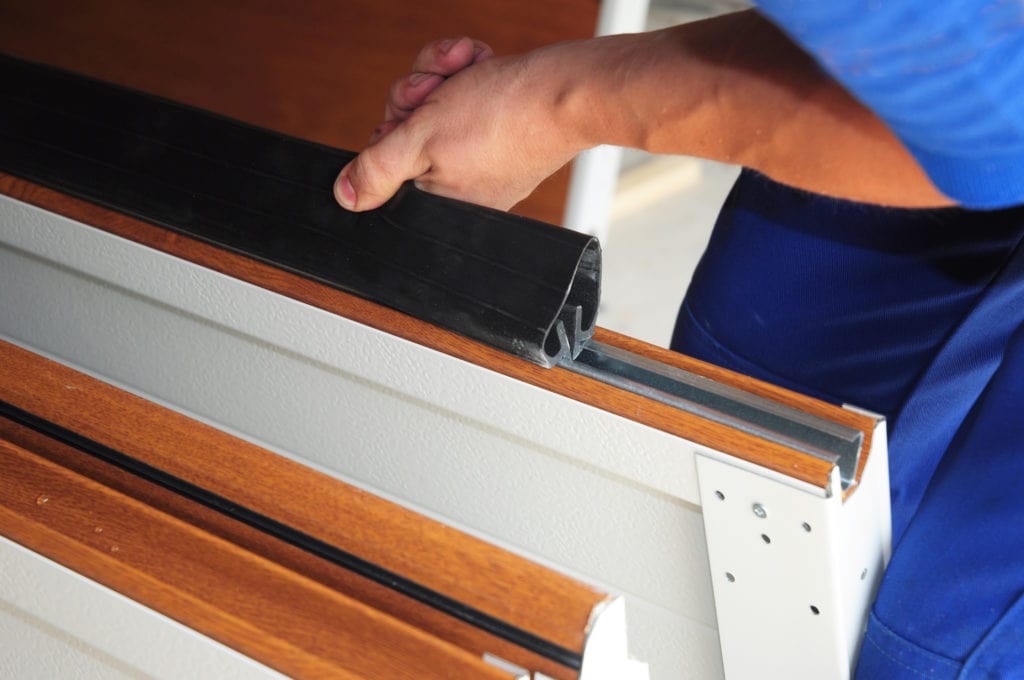You can extend the life of your garage door by following our maintenance checklist. But inevitably, repairs will be needed from time to time. Knowing whether you can handle these repairs yourself or if you should call in the pros is crucial. Your ability to assess what your garage door needs and your experience level can significantly impact both the longevity of your door and prevent further issues.
Let’s dive into some common repairs that you might encounter with your garage door and how to determine if they’re best handled as a DIY project or require professional assistance.
#1. Decorative Hardware
Adding decorative hardware is a simple yet impactful way to refresh your existing garage door. Once you decide on the design you like, installation is straightforward. There are various hardware options available, so you can pick based on your personal style. If your current hardware is beginning to show signs of wear—like peeling off or rusting—it’s time for some maintenance. Regular tightening of your hardware can prevent accidents and maintain its appearance.
To replace your garage door hardware, you’ll need a few basic tools: a tape measure, level, pencil, and drill. Begin by positioning your hardware where desired and marking the drill holes with a pencil. Use the level to ensure your marks are straight. After marking, drill the holes and secure the hardware in place. The good news? Replacing or repairing decorative hardware is definitely a DIY-friendly task!

#2. Weather Stripping or Seals
Weather stripping is essential for maintaining the efficiency of your garage door, especially during colder months. It helps keep warm air inside and prevents cold drafts from seeping in. Over time, you may notice certain signs indicating it’s time to replace your weather stripping:
- Your garage feels warmer or colder than your thermostat suggests.
- Water is leaking under the door.
- Light is visible around the edges of the door.
- Cracks or warping are visible.
- The material feels brittle instead of flexible.
If you decide to replace the bottom seal, gather the necessary supplies and remove the old weather stripping first. This is also a great opportunity to clean the track, as dirt and debris often accumulate over time. Apply dish soap to the new material to ease installation. Whether your weather stripping is nailed on or attached differently, this is a project you can tackle yourself.

#3. Garage Door Track
Issues with your garage door track can affect the entire system. Understanding the type of track you have will help you identify problems and solutions. To prolong the life of your track, lubricate it at least twice a year. Before applying lubricant, inspect the rollers, hinges, and opener chain. Using the correct degreaser is key; opt for silicone spray or white lithium grease instead of standard products like WD-40®.
Look out for these signs that indicate it’s time for a track repair:
- Your door doesn’t close smoothly or fully.
- Noise increases during operation.
- The door sags or shows signs of warping.
- Opening or closing becomes sluggish.
- Rust or corrosion appears on the track.
Installing new tracks can be challenging, so unless you’re experienced, it’s best to call in a professional. Properly done, this repair can save you from bigger headaches down the road.
#4. Garage Door Sensors
Garage door sensors are critical for safety, ensuring nothing gets crushed under the door. If the sensors fail to align properly, your door might remain open or behave erratically. Addressing sensor issues promptly is vital, as malfunctioning sensors can pose serious risks.
Start by cleaning and realigning the sensors. Sometimes dirt or debris can block the photo-eye connection. If the problem persists, replacement may be necessary. Fortunately, sensors are relatively easy to replace yourself with items found at most home improvement stores.
#5. Garage Door Springs
Garage door springs play a pivotal role in the smooth operation of your door. If you’re wondering whether you can replace them yourself, the answer is no. These springs are under immense tension and releasing them improperly can lead to serious injury or property damage. Signs of trouble include excessive noise during operation or a door that closes too quickly. Even a single faulty spring should be addressed immediately, as it affects the entire door’s functionality.
#6. Automatic Openers
If your garage door isn’t opening correctly, your opener could be the culprit. Fixing this is a manageable DIY project. Ensuring your opener works properly not only makes life easier but also enhances security. Without a reliable opener, your home becomes more vulnerable to intruders.
Follow the instructions that come with your new opener. Test it first before mounting it permanently. Once confirmed operational, secure it onto the header bracket—this step is easier with the door open.
How to Prevent Garage Door-Related Accidents
Even with careful maintenance, garage doors can pose risks. Here are some tips to minimize those dangers:
- Regularly test the safety sensors using objects.
- Check the door’s balance by manually lifting it halfway.
- Keep remote controls out of reach of children.
- Tighten bolts securing the door to the building.
- Ensure the emergency release is functional.
This article was originally published on June 30th, 2020, and last updated on November 29th, 2023.
Wcb Portable Gear Oil Pump,Portable Gear Oil Pump,Portable Oil Transfer Gear Pump,Portable Gear Pump
Hengshui Yuanhan Trading Co.,Ltd , https://www.yuanhanpump.com